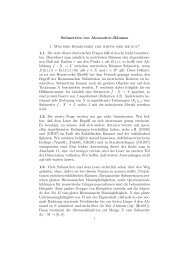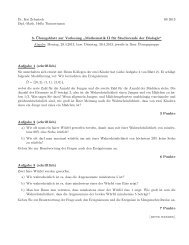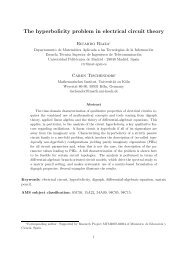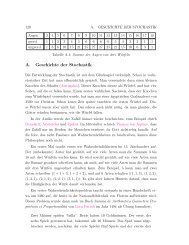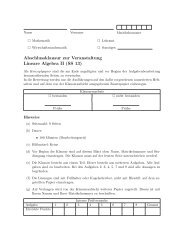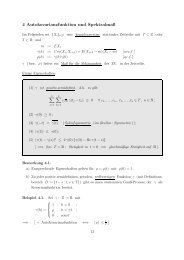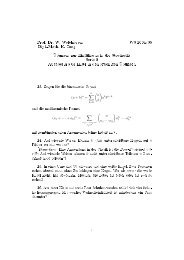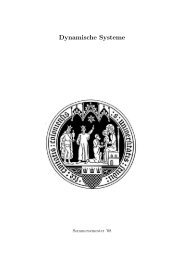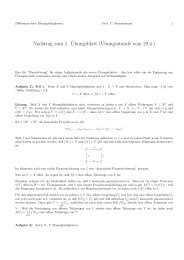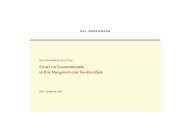Inhaltsverzeichnis - Mathematisches Institut der Universität zu Köln
Inhaltsverzeichnis - Mathematisches Institut der Universität zu Köln
Inhaltsverzeichnis - Mathematisches Institut der Universität zu Köln
You also want an ePaper? Increase the reach of your titles
YUMPU automatically turns print PDFs into web optimized ePapers that Google loves.
DMV Tagung 2011 - <strong>Köln</strong>, 19. - 22. September<br />
Hansjörg Albrecher<br />
Université de Lausanne<br />
Insurance Risk Theory with Tax and Dividend Payments<br />
In this talk it is shown how a mixture of analytical and probabilistic techniques can be used to assess the<br />
effect of dividend and tax payments on the solvency of an insurance portfolio. This will be illustrated both<br />
for the classical risk model and some of its extensions. It will also be discussed how symbolic techniques<br />
and links between risk theory and queueing theory can enrich the set of tools for these investigations.<br />
Nicole Bäuerle<br />
Karlsruhe <strong>Institut</strong>e of Technology (KIT), Karlsruhe<br />
Optimal Dividend-Payout in Random Discrete Time<br />
We assume that the surplus process of an insurance company is described by a general Lévy process<br />
and that possible dividend pay-outs to sharehol<strong>der</strong>s are restricted to random discrete times which are<br />
determined by an independent renewal process. Un<strong>der</strong> this setting we show that the optimal dividend<br />
pay-out policy is a so-called band-policy. If the renewal process is a Poisson process, it is further shown<br />
that for Cramér-Lundberg risk processes with exponential claim sizes and its diffusion limit, the optimal<br />
policy collapses to a barrier-policy. Some numerical examples are presented for which the optimal bands<br />
can be calculated explicitly. This is joint work with H. Albrecher and S. Thonhauser.<br />
Julia Eisenberg<br />
Technische <strong>Universität</strong> Wien<br />
Optimal Control of Capital Injections by Reinsurance With and Without Regime Switching<br />
We consi<strong>der</strong> an insurance company, where the claims are reinsured by some reinsurance. Concerning the<br />
surplus of the insurance company two different cases are studied. In the first case the surplus process is<br />
supposed to follow a diffusion; in the second case we let the drift and the volatility of the diffusion-surplus<br />
depend on an observable continuous-time Markov chain. This Markov chain represents regime switching<br />
- the macroeconomic changes impacting the parameters of our model.<br />
Our objective is to minimize the value of expected discounted capital injections, which are necessary to<br />
keep the risk process above zero. Thus, we goal to find the value function defined as the infimum of<br />
expected discounted capital injections over all reinsurance strategies; and to <strong>der</strong>ive the optimal strategy<br />
leading to the value function.<br />
Whereas in the case of a “simple” diffusion the value function is an exponential function, things are<br />
different in the case of regime switching. A general form explicit solution could not be given. However,<br />
we illustrate how the value function can be calculated by a simple example with a two states Markov chain.<br />
204




